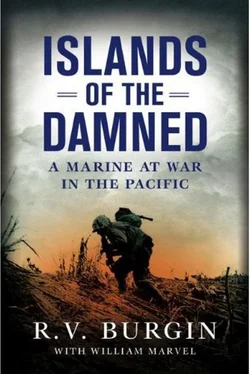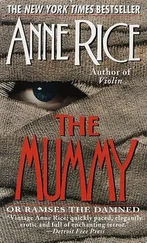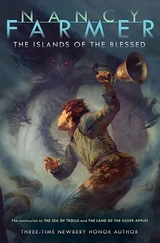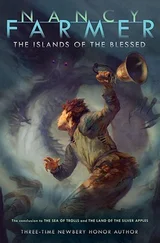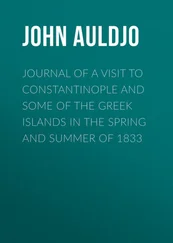On the last day of March, we pulled into Port Melbourne, Australia. We were trucked forty miles southeast of the city to Camp Balcombe. It was a pretty place with green fields and gentle hills that reminded me of Texas. The camp was full of Marines from the First Division’s Fifth Regiment, resting up and retraining after the Battle of Guadalcanal. We were just raw recruits from the Ninth Replacement Battalion, the newcomers. They put us in with the veterans. In the months ahead they became our teachers.
For the first week or so we didn’t do much. We were assigned to occasional work parties, policing the grounds, picking up trash, dumping the garbage, doing whatever needed to be done. Then I was sent to the Fifth Regiment Headquarters and Service Company, where I was put on KP. Not as punishment for anything I’d done, but just to keep me busy and because somebody had to do the work.
One of the sights around camp was Lou Diamond, the legendary 60mm sharpshooter and one of the Marines’ Old Breed. He had fought in World War I and after that at Shanghai and finally at Guadalcanal. Now he was assigned as sergeant of the guard at the brig while awaiting shipment home because he was too old to fight. He wore a little goatee and the word was he drank Australian beer by the case.
Diamond had an old cat, and every morning you’d hear that foghorn voice of his calling, “Come on, Tom. Come on, Tom.” That cat would follow him everywhere, all day, like a dog.
After I’d been on KP for about three months, they pulled me out and said, “You’re going up to Third Battalion, K Company. Mortars.”
It was my specialty, but in the Marines you never know where they’ll put you. You just wait.
I moved a couple hundred yards from headquarters. The barracks was large enough to hold both the machine gun and mortar sections. Jim Burke was there.
They began to train us constantly. At the rifle range, I shot poorly with the BAR—Browning Automatic Rifle—but finally shot Expert with the M1, which was just being issued. Shortly after that I was promoted to private first class.
We marched. We would head out in the mornings, early, head up the road twenty miles and get back in the afternoons, late, carrying a full pack and our weapons.
One day we had a competition to detail strip a machine gun, an M1, and mortar, see who could tear it down and put it back together the fastest. I could put that mortar together and get it on target faster than anybody. I mean, I was the head dog. I made gunner immediately and was issued a .45, which I wore from then on.
I think that competition was when I was first noticed. I was a gunner on New Britain. On Peleliu I was a corporal, an observer and squad leader. By Okinawa I would be sergeant in charge of the mortar section.
* * *
The Australians had been in the war longer than we had. They sent their Diggers—as they called soldiers—to fight the Germans in 1940 when I was still picking cotton and playing high school football. The day before the Japanese bombed us at Pearl Harbor, Australian airplanes fired on a Jap convoy off the coast of Malaya. Two months later, Japanese planes bombed Darwin on Australia’s northern coast. In March 1943, they were expecting a Jap invasion at any time.
Even at Melbourne, on the southern coast, the war seemed pretty close. U.S. Marines were everywhere—the First Marine Division had taken over the new Royal Melbourne Hospital for the wounded and malaria cases from Guadalcanal. The division’s First Marine Regiment was quartered on the city’s cricket grounds, and the Seventh Marines were out at Mount Martha, right up the hill from Camp Balcombe. On weekends and leave days we poured into the city to enjoy the beautiful parks and broad streets, the bars and sweetshops. And to tell the truth, the girls, who were at least as pretty as American girls.
Once I was assigned to KP duty I lost no time working out a deal with the mess sergeant. I would work a straight twenty-four hours, then get twenty-four hours off to go into town. As soon as I was free, I’d shower, put on a fresh uniform, find Jim Burke, and we’d head out.
We’d catch what we called the cattle car, an eighteen-wheeler with a trailer that had board benches along the sides and down the middle. You could sit on that or straddle it—neither was comfortable—for the ride to Frankston, where we’d catch the train into Melbourne.
The city had streetcars and buses, the first double-decker buses I ever saw. Trains left for the suburbs every three or four minutes. You could go anywhere and you didn’t have to wait all day to do it.
We’d pull into the big Flinders Street Station about ten a.m. Jim usually spent the day across the street in the bar at the Young & Jackson Hotel, where the big attraction, other than strong beer, was Chloe , a very big and very pink painting of a naked young lady. Every GI in Melbourne had to pay his respects to Chloe at least once.
I might have a couple beers with Jim, but then I would go sightseeing. But first we would have some business to attend to.
Jim had requested that the Marines send his allotment home to Clinton so his folks could bank it for him. But for some reason, the Corps went on paying him full salary, too. By the time someone caught the mix-up, he owed the Marines a lot of money. So they cut him to $5 a payday until it was paid off. That wasn’t enough to go on liberty.
Before we went out on the town, Jim and I would go to the PX and each buy three cartons of cigarettes at fifty cents per carton. We were getting good American brands—Lucky Strikes, Camels and Chesterfields—not those wartime cigarettes like Fleetwoods. We’d hide them in the short wool jackets they’d issued us—Eisenhower jackets—take them into Melbourne and walk down the street until we sold them. We were getting two and a half Australian pounds a carton, and the exchange rate was about two and a half American dollars on the pound. You could buy a pint of beer for about twelve cents. Steak and eggs cost fifty cents. About thirty cents would get you into a movie. So six cartons would get Jim through liberty that weekend.
Late one Sunday afternoon in April, Jim and I were walking down Collins Street when we found ourselves following two young women, a blonde and a brunette, both very pretty. When they stepped into a milk bar—a combination sweetshop and soda fountain very popular in Melbourne—Jim and I stopped and looked at each other.
“The brunette’s mine,” I said.
“I’ll take the blonde,” he said.
We stepped inside, where the salesgirl was just weighing the candy the girls bought. “I’ll wait on you next,” she said.
“Never mind,” Jim said, nodding at the two girls. “We’re with them.”
“I’ll have what she’s having,” I said, indicating the brunette.
Outside the shop we asked their names. The brunette was Florence Riseley and her friend was Doris Moran. They said they were eighteen. They had come downtown from Albert Park, a suburb, to meet Florence’s mother and three-year-old brother, who were from Tasmania and would be taking a train that evening. Since none of us had anything to do for a couple hours, the girls offered to show us the Melbourne Museum, which was a few blocks away.
The museum’s main attraction turned out to be a stuffed racehorse named Phar Lap, which Doris informed us had been poisoned by “you Yanks” while racing in the United States. After about thirty minutes in the museum, staring at exhibits, Jim complained that everything in the place was starting to smell as dead as the horse.
“We told you that you Yanks killed him,” the girls said and laughed.
We walked them back to Flinders Street Station, where Florence’s mother and little brother had already arrived and were waiting to catch a local to the suburbs in an hour.
Читать дальше
